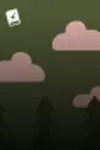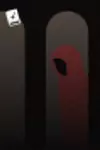Court
“But Claire could always draw me out of a mood, no matter how dark. To comfort me, she started talking about books and immortality, about how she felt that an author and their art were one and the same. That an author's works were not like children, but more like incarnations. They were their authors. And that as long as people continued to read them, they would live on. ‘When writers die, they become books,' one of her favorite authors was famously attributed as having said, she told me.”
This was amazing; brilliant and fascinating with a wide array of emotions.
Read at: https://www.tor.com/2021/08/18/the-future-library-peng-shepherd/
I enjoyed the color palette. At times it was difficult to tell some of the sisters apart, but the larger story of what was happening to the women employed at the company and the time period shone through. I also enjoyed the interview with the author at the end.
French artist tells a story that was happening in the US in the 1920's, there's women in the work place, suffrage, and prohibition. The story is told through a group of women who are friends.
About halfway through the girls go to the beach and see something that at first I was unsure about the woman without an arm at Coney Island who gets stares from the ‘Radium Girls' and judgement that she shouldn't expose her ‘deformity' to children. But then I thought that it was perhaps ‘fitting of the times' and then by the end I thought that perhaps the knew how that woman felt as most of them were missing teeth, at least one of them used a wheelchair
I picked this up because I was curious about [a:Augusten Burroughs 3058 Augusten Burroughs https://images.gr-assets.com/authors/1459810857p2/3058.jpg] writing a children's book. I also love birds.I was a little annoyed at the teacher blaming Chloe for the stolen earring, even if the teacher doesn't know about crows liking shiny objects (I thought that was common knowledge) how would Chloe get the earring off Olivia's grandmother's bathroom windowsill?
For a memoir this feels really vague. I understand that Stevenson may not have wanted to name their diagnosis (diagnoses?) or medication at the end of the book because perhaps they (book was published as Noelle Stevenson, but now is ND or Nate) were still processing what it means to them.
It was fine to talk about bipolar in the beginning of the memoir, but not at the end? Or maybe the diagnosis mentioned at the end of the book is ADHD?
Partway through the book I shared a picture Stevenson drew of the Hulk and I went to wiki to make sure I was using the correct pronouns. There I saw the name change and thought, ah I'll come back to this later, I want to see what the memoir says.
I'll add more to this review later. I'm mulling things over but for now I'll jot down that the introduction was well done and I LOVED the mountain climber part but am really sad that Molly – also an amazing cartoonist– is mentioned so little.
I miss my Santa Cruz days and the gay community I experienced there.
Stevenson doesn't owe anyone anything such as discussing their sexual identity, their mental health, their partner, their gender identity, etc. But it's a memoir and Stevenson does bring each of these topics up and the at times oblique referrals call to mind stigma and shame and it saddens me.
I do really appreciate Stevenson stating “It would have been worth it anyway, but being on medication has in no way lessened my capacity for feeling or creating.”
can be read at: https://www.tor.com/2023/01/18/how-to-cook-and-eat-the-rich-sunyi-dean/
“But on with the introductions. This gentleman to your left is Todd. Not his Christian name, just a bit of an in-joke, there; he's our butcher, you see. Oh, is sir unfamiliar with Sweeney Todd, the fictional character? Well, never mind, it's a rather old-school story. I daresay they don't teach it much in schools anymore. Might give folks ideas.”
Mostly gorgeous photography. I say mostly because I don't think all creepy crawlies are aesthetically pleasing, but still appreciate their biodiversity. While looking at these beautiful, exotic animals I felt pangs of sadness and guilt mix with awe and wonder. I like the artistic choice of having a completely white or black background, but sometimes it was difficult to get a sense of scale of the animal or insect, yet a few times the creature was photographed perched on someone's thumbnail or otherwise being held so you knew its size relative to human hands. One butterfly is photographed as being in a small container, like one might have as a to-go sauce container.
The titicaca water frog stuck with me as it has folds in its skin to help it get oxygen for it lives high up in the Andes mountains.
Sometimes I found myself mad at ‘Chinese medicine' as it was listed as one of the reasons for some species' endangered status, such as for pangolins, some wild cats, and a species of seahorse. However, other reasons such as deforestation, pollution, mining, and the harvesting of palm oil and other resources are also causes, causes that I -inadvertently- contribute to.
I do not recall seeing the brown pelican photographed. I am a UCSC alum and did see a brown pelican while at Santa Cruz. They were at a time endangered, but have since increased their numbers.
At the end of the book the photographer gave a brief behind the scenes look at his process. I appreciated that he kept the animal's comfort as the priority, choosing to edit out dropped feathers, dirt, waste. He commented that once the orangutan understood she was having her photo taken that ‘she leaned into it'.

















































